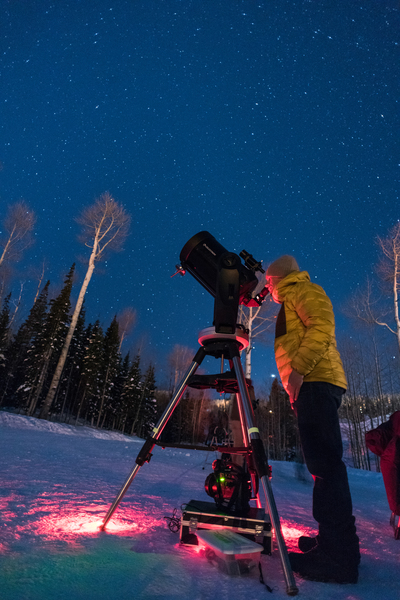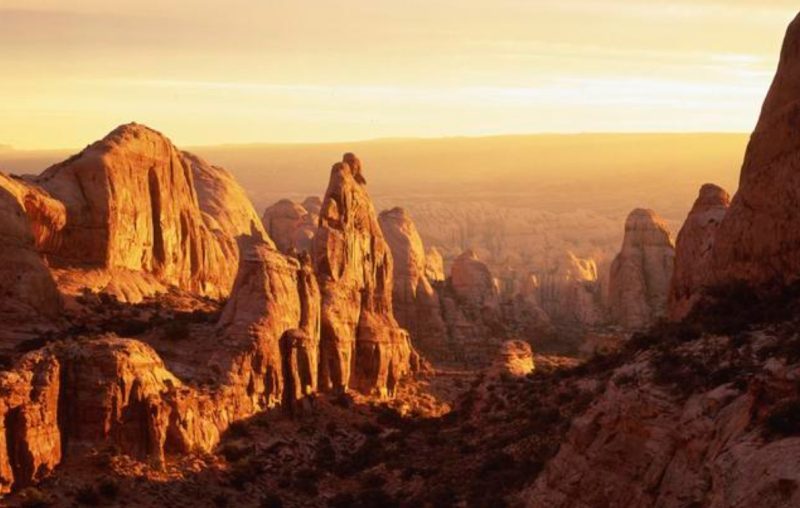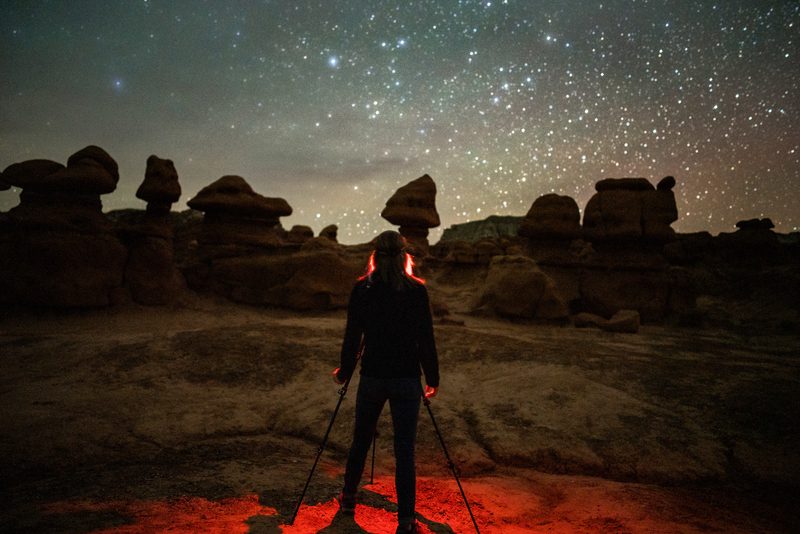Utah is, of course, famous for its incredible powder, trademarked as “the greatest snow on earth”. That brings skiers and boarders to the western US state from all over the world each winter. The last one, 22-23, was particularly exceptional with many areas receiving 7 or 8 metres of snowfall (some 9 metres!) leading several to stay open until May. In the end 13 out of 15 resorts broke snowfall records and in total there were more than 200 days from the start to end of the season.
But there is more to Utah than just incredible snowfall and no I’m not talking Mormons. The state is also famous for its phenomenal national parks, its remarkable dinosaur finds and its stunning dark skies for star gazing.
So for skiers and boarders, the question is do you just go to Utah for the snow, or do you make it a bigger trip and visit a state park in late winter or early spring too and perhaps mix in a bit of star gazing?
It’s quite easy to do and there are now options like the remarkable Compass Rose Lodge, close to the ski areas of Powder Mountain and Snowbasin. Besides being a very cool ski lodge with a steampunk theme, a superb coffee shop and décor that includes one of the world’s first chairlift chairs from nearby Sun Valley in Idaho, the Compass Rose houses its very own mini astronomical observatory. Stargazing experiences are offered to guests, for a very different apres ski experience.
Although Utah is home to the biggest ski area in the US, it is worth knowing that there are more than a dozen less-well-known areas that are equally or perhaps even more (less likely to be busy, more affordable lift passes and on-mountain dining) than the big name destinations most Brits head to when we get off the plane in Salt Lake City.
Powder Mountain
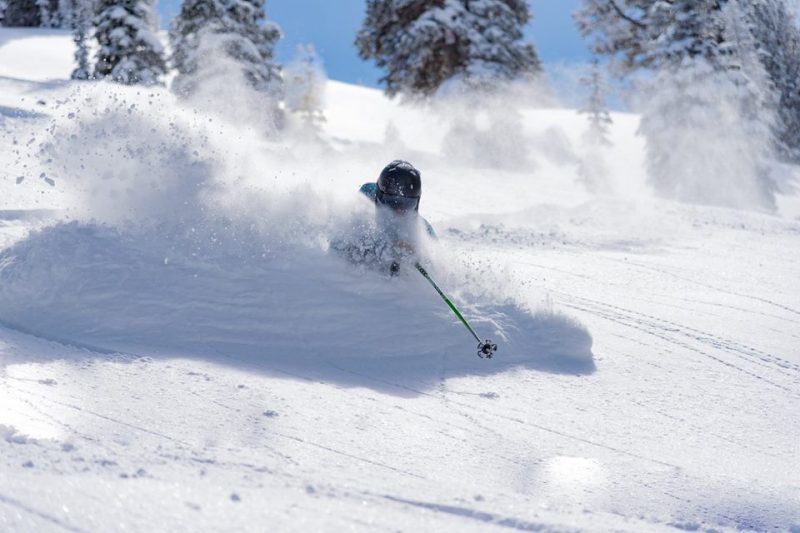
Powder Mountain
Just an hour north of Salt Lake City International Airport, Powder Mountain Resort is an intriguing prospect. It markets itself as both “the best-kept secret in skiing” and as having more terrain than any other ski area in North America. It claims 8,464 acres, which is nearly 300 more than the resort most people think of as the biggest, Whistler Blackcomb, with 8,171 acres. The thing is that Whistler has 27 lifts, most of them high-speed quads and gondolas, capable of lifting 70,000 people an hour up the slopes, whereas Powder Mountain has nine lifts, one of them a high-speed quad, and limits ticket sales to 1,500 a day, and rarely reaches that many people there.
So the obvious question is, would you rather my at a huge ski area with a network of fast lifts you share with thousands of people, or an equally huge area with a third the number of lifts but hardly anyone else there? Oh and lift passes a fraction of the price.
Powder Mountain is also powder by name, powder by nature, receiving an average of 500” of 100% natural snow annually, and notes that this, combined with the limited number of people on the slopes, means you’ll enjoy true powder days, not, what in reality is usually just a few hours of powder before slopes are skied out in more visited resorts. It offers two snowcats to extend the options and heliskiing is also an option.
Sundance
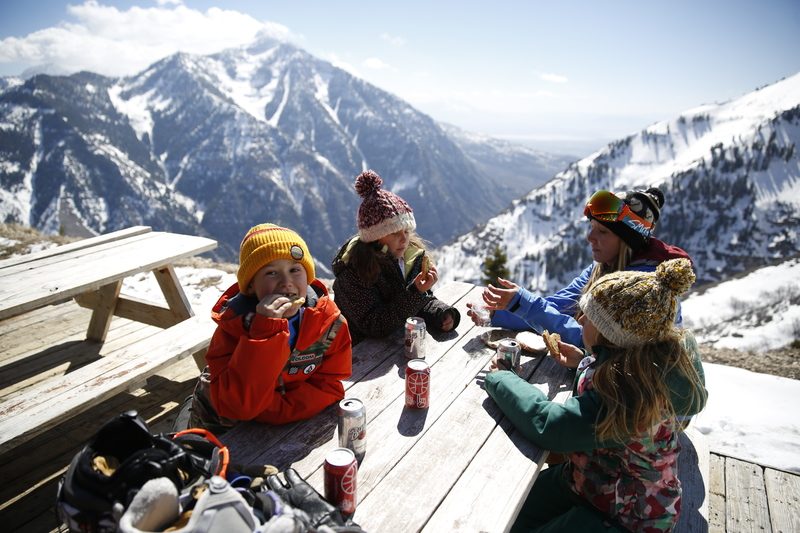
Sundance credit Marc Piscotty
Sundance is an intriguing and very different ski area, this time south of Salt Lake City. The centre dates right back to the 1940s when it was developed by some farmers of Scottish ancestry into a rudimentary resort.
However, a big change came when actor Robert Redford bought the area in the late 1960s on the back of the global success of the film Butch Cassidy and the Sundance Kid and changed the resort’s name.
Redford owned the resort for five decades and while other ski areas grew exponentially, some into small, bland cities by the slopes, sold off to corporate buyers, he made the priority maintaining the history and traditions of the land, strictly limiting development and attempting to remain true to both the original indigenous tribes that lived in the area, and the first settlers of European descent.
The result is a small but very authentic feeling ski area where you can both have a great day on the slopes and perhaps take a course in jewellery making or pottery. There are also some interesting buildings to explore including the Tree Room restaurant which was built around a living tree (which has sadly now expired!) but contains lots of Redford’s private collection of Native American art. Like all of Sundance’s restaurants, the onus is on healthy, organic food so the dining here is way above the ski area norm. There’s also a bar in which Butch Cassidy once drank, carefully moved and rebuilt from its original home in Wyoming and now serving wines and cocktails alongside the beers and whisky Cassidy was probably more familiar with.
Now in his 80s, Redford sold Sundance a few years ago but with strict terms in the sale conditions to prevent over-exploitation of the land and keep most of it wild.
Snowbird
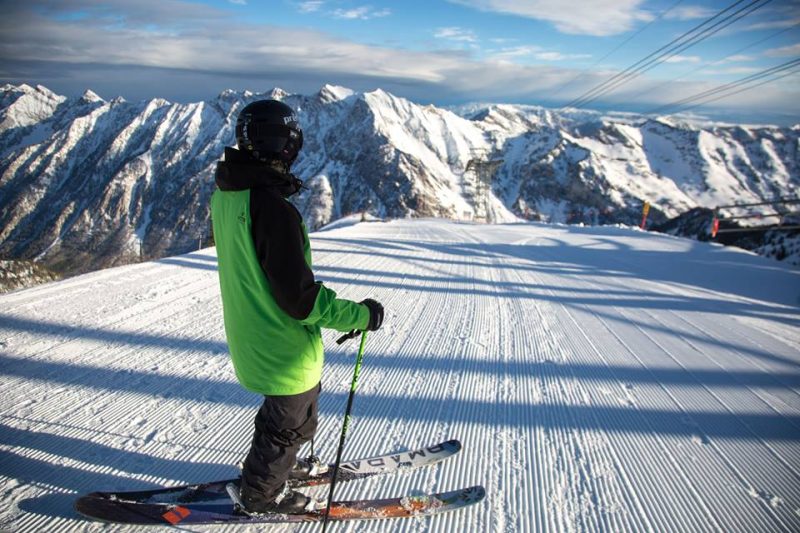
Snowbird
Snowbird is one of Utah and the world’s best known ski areas and was one of the big beneficiaries of the huge snowfall last winter, clocking up 838” (over 21 metres) of snowfall and its season continuing into May, although in its case that happens most years anyway.
With 2,500 acres of terrain relatively evenly divided into gentle (27%), moderate (38%) and steep (35%) and 13 lifts including the iconic tram (cable car), it’s a world class destination.
The snowfall earlier this year actually caused issues as there was just too much at some points, leading to extreme avalanche danger and the occasional instruction to stay indoors, don’t ski or even walk or drive outdoors until the danger level had dropped. The snow totals were incredible, getting towards double the still world-leading 500” annual average. But even with the excess, most days the slopes were open and the deep powder conditions amazing.
National Parks
If you do want to combine skiing or boarding with Utah’s many other attributes, springtime is a great time to continue towards southern Utah to visit some of the national and state parks. These have gotten ever more popular in recent years, particularly in the post-pandemic bounce back, so a visit in late March or April as things are just opening up can be great timing before the crowds arrive and with value at the max.
(Image credit: Tom Till)
One option is to base yourself in the rapidly growing town of Moab close to the Colorado border which is fast becoming one of the year-round adventure capitals of the world, popular with runners, bikers and off-road drivers.
It’s also right next to one of the most famous national parks in America, Arches, famed for its many hundreds of remarkable natural rock structures shaped like, well, arches, in all shapes and sizes. It’s an awe-inspiring place to visit and like the quieter ski slopes of Powder Mountain and Sundance, much better to visit without the crowds.
There are state parks nearby too, equally worthy of a visit and, like the ski areas mentioned above, often receiving fewer visitors than the most famous national parks, which can make for an even better visit. One such, Dead Horse Point State Park, offers some of the most incredible scenic vistas in the world with vast swathes of Canyonlands National Park and the winding Colorado River below, as well as the wider western US visible from its overlook which soars 2,000 feet (over 600 vertical metres) above the landscape below.
If astronomy is your thing there are more options to view the night sky without any light pollution, including the intriguing options of an evening session with a Native American astronomer guiding you through some of the ways in which the original inhabitants viewed the heavens.
With so many options it can be difficult to decide what to do on a Utah ski trip, but with the state offering so many more life-affirming world-class experiences than ‘just’ skiing or boarding, it’s well worth considering adding more to your non-snow adventures to your next trip.
(Pic Cedit Austen Diamond Photography)
Packages
Ski Independence offer a 13-night itinerary Utah dark skies and winter highs itinerary from £3969 pp (based on two sharing). Price includes direct international flights with Delta Airlines, intermediate SUV car rental at gold option for 13days, all accommodation + taxes.
Route and accommodation details: 3 nts / 1 x Classic Room 1 King RO, Le Meridien Salt Lake City Downtown, Salt Lake City / 3 nts / 1 x King Room B&B, Compass Rose Lodge, Huntsville / 2 nts / 1 x Sundance Suite RO, Sundance Mountain Resort, Sundance / 5 nts / 1 x Guest Room B&B, Hyatt Place Moab, Moab
Ski Safari offer a 14 night Utah Powder Hunter and National Parks itinerary from £3675 per person (based on two sharing). Price includes direct flights with Delta airlines, LHR-SLC, Standard SUV hire, 5 nights at Le Meridien SLC, 5 nights at the Compass Rose Huntsville and 4 nights at the Canyonlands Inn, Moab.
America As You Like It has an 11 night Dark Skies and Winter Highs fly-drive from £2740 per person, based on two sharing, including return flights on Delta from Heathrow to Salt Lake City, fully inclusive car hire, four nights at the Element SLC, three nights at the Compass Rose, Huntsville and four nights at the Hoodoo in Moab.
More Info
Powder Mountain Snowbird Sundance
Compass Rose Lodge Moab Moab Valley Inn
Visit Utah
or the latest snow forecast and updates on where is best to ski now, as well as ski news, gear reviews and resort spotlights, you can check out our regular podcast here Apple | Spotify | Podcasts or search The White Out on your chosen podcast directory



